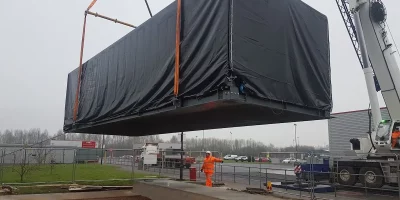Although managing computer cables should be a priority, it is often forgotten. However, from your office desk to the dozens or hundreds of servers in a data centre, haphazard cabling may ultimately result in a “spaghetti tangle,” which is unsightly and can cause a wide range of significant issues. Therefore, proper cable management is essential.
What is Data Center Cabling?
The three primary types of network cabling often used in data centres are copper, fibre optic, ground, and AC/DC power. You may consult the available interface on the equipment utilized in the data centre to decide what kind of cabling has to be installed. In addition, the bandwidth requirements of the data centre equipment may also be used to establish the precise network data cabling requirements.
There are two types of data centre cabling: structured cabling and unstructured cabling. It adheres to a structured cabling design when predetermined standards based on innovation, with predetermined connection points and paths, are used. In particular, structured cabling imposes a cabling design based on the system’s bandwidth needs. In addition, the cables will undergo testing to guarantee excellent functioning before being arranged and labelled. Although installing a structured cabling system may take longer and cost more upfront, operating expenses will be much cheaper over time, and the system’s lifetime will be noticeably longer than an unstructured method.
Unstructured cabling, also known as Point to Point cabling systems, on the other hand, refers to cable systems that do not make use of predetermined standards, connecting points, or paths. This cabling design may create cooling problems and more significant energy bills due to airflow constraints. In addition, it will be more difficult to manage system expansion with unstructured cabling since there is no strategy or design to guide changes in cable placements or the installation of additional cabling. Unstructured cabling may result in greater operating expenses and a shorter system lifetime even though installation may take less time and cost less initially.
Why is it Important?
Every data centre’s connection, given by the cable infrastructure, enables the daily transactions that support organizations in making crucial choices. All data centres have different kinds of wiring, from installations made entirely of copper to installations made of fibre and everything in between (depending on your equipment and requirements). Whether the cables are for power or data, improper management of this critical component of the data centre infrastructure may result in significant problems, including higher running expenses and more costly outages. Therefore, the administration of cables cannot be neglected.
Every data centre’s network and connection are provided through cabling systems. Transactions made possible by cabling infrastructures allow organizations to make critical choices regularly. Depending on the equipment and its needs, data centres impose diverse cabling requirements, ranging from all-copper installation to all-fibre installation and everything in between. Whatever the purpose of the cables under consideration, ignoring and undervaluing this crucial component of the data centre infrastructure may result in significant issues, such as increased operating costs and more expensive outages. The administration of cables must be done with forethought, or several problems might arise later.
Like many other aspects of life, careful team preparation and extensive installation consideration are always preferable if you want to do data centre cabling properly. The best method for data centre cabling may include designing the cabling infrastructure and the data centre simultaneously, utilizing system requirements and physical architecture to determine the kinds and numbers of cables required. As a result, it will take less time to design the infrastructure. Furthermore, to diagnose, repair, or replace equipment in the future, it is not necessary to figure out which equipment is linked to which cable when the infrastructure is planned out.
Best Practices: Data Center Cable Management
In addition to providing a sense of orderliness while seeing a data centre cable system, laying out cabling infrastructures helps users save time, money, and a variety of other resources. Data centre owners and operators only experience extra hassles as a consequence of wasting time and money trying to solve issues that might have been avoided had proper cabling management been prioritized.
It’s essential to handle your cables properly. It is necessary. It is vital to the purpose. So follow these best practices to make sure your data centre’s cabling infrastructure meets your needs:
- ANSI/TIA-942-B-2017 Telecommunications Infrastructure Standard for Data Centers
- BICSI 002-2019 Data Center Design Implementation & Best Practices
Installation Best Practices
- Testing and certification: To confirm that the infrastructure is functional and capable of meeting your system’s bandwidth requirements.
- Documentation: To make future maintenance or troubleshooting easier, note the wires used and their locations and connections.
- Measure: To make sure the cables are the right length, measure. This safeguard protects essential IT equipment from unplanned outages by tangled or disconnected loose wires.
- Growth strategy: Ensure that your system is suitable for the near future. Ensure that cable trays and racks are ergonomically created to support expected expansion.
Organization Best Practices
- To make adding or removing servers from the shelf easier, run cables along the edges of the server racks.
- In data centres with raised floors or those with wires running through the ceiling, bundle cables together to make it easier to attach the next piece of gear up to the top or down to the floor.
- Prepare ahead of time to install extra gear. Airflow and cooling patterns may be hampered by disorganized cabling. Planning averts harm from rapidly increasing temperatures brought on by constrained airflow.
- Securely label cables on both ends. This labelling procedure helps you save time and money by making it simple to identify lines for testing or repairs, to install new equipment, or get rid of excessive wires after moving or upgrading equipment.
- Cables should be colour coded for easy identification. Pick a colour palette that both you and your staff can live with. It could be a good idea to display a legend explaining the significance of each cable’s colour. You may also colour-code the cable’s final location for bigger installations spanning floors or offices.






